
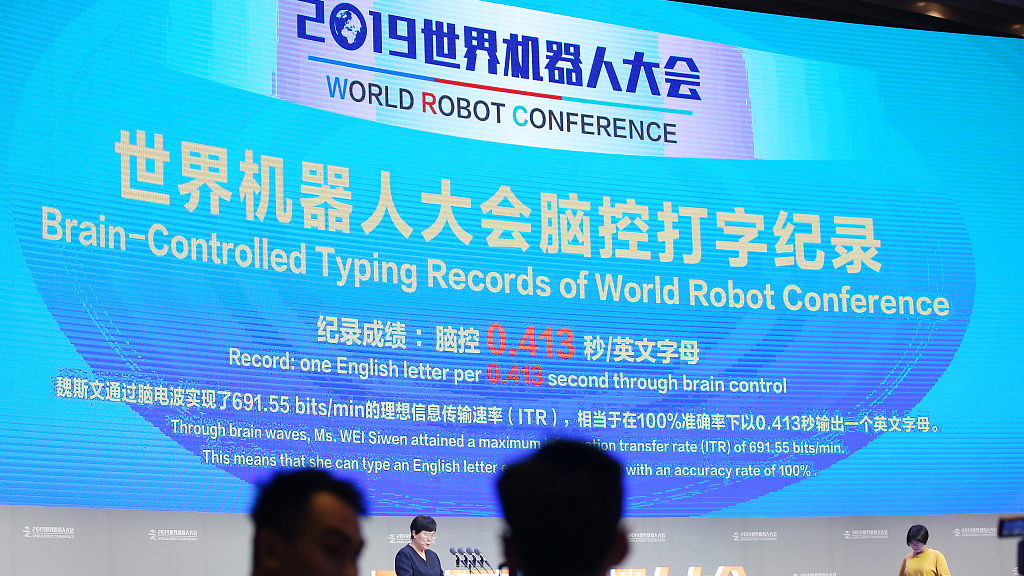
Brain-controlled typing record at WRC /VCG Photo
0.413 seconds!
Typing, swiping and clicking the mouse to send an email will soon become a thing of past. A high-speed brain-controlled computer typed a person's thoughts at lightning-fast speed at the World Robot Conference (WRC) in China, setting a world record.
The computer typed a sentence in Chinese characters at a speed of 691.55 bits per minute, keying in each letter in barely 0.413 seconds with 100 percent accuracy.
The feat was accomplished with the help of a brain-computer interface (BCI), a technology that translates electric signals generated while a person is thinking into words.
Discussions around the technology reached a climax this summer after Tesla founder Elon Musk presented the progress made by his startup Neuralink in the last two years.
According to Musk, they’ve realized a full brain-machine interface that can "achieve a sort of symbiosis with artificial intelligence (AI)." Their goal is to make adding brain-enhancing implants as straightforward a procedure as laser eye surgery.
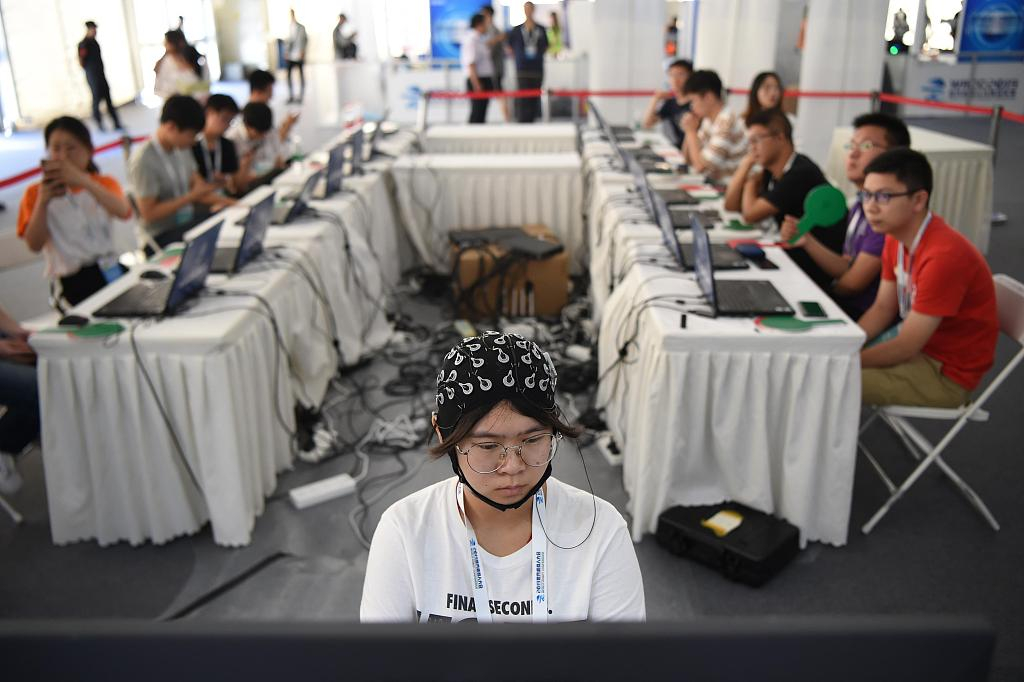
Record holder Wei Siwen at the competition /VCG Photo
The past and future of BCI
Simply speaking, BCI technology translates physical signals collected from the brain into machine language that can instruct computers, robots and machines.
Research has been conducted on the topic for decades. But the focus was limited mostly to the field of medicine, where lab scientists have been trying to help motor-impaired individuals cope with daily activities and basic communication needs.
A case in point is the smart wheelchair used by Stephen Hawking. Diagnosed with amyotrophic lateral sclerosis (ALS), a neurodegenerative disease that can gradually destroy all motor functions, the scientist was confined to his wheelchair.
Using BCI technology, he could command his tablet PC to type, convey his messages and carry on with his pathbreaking research.
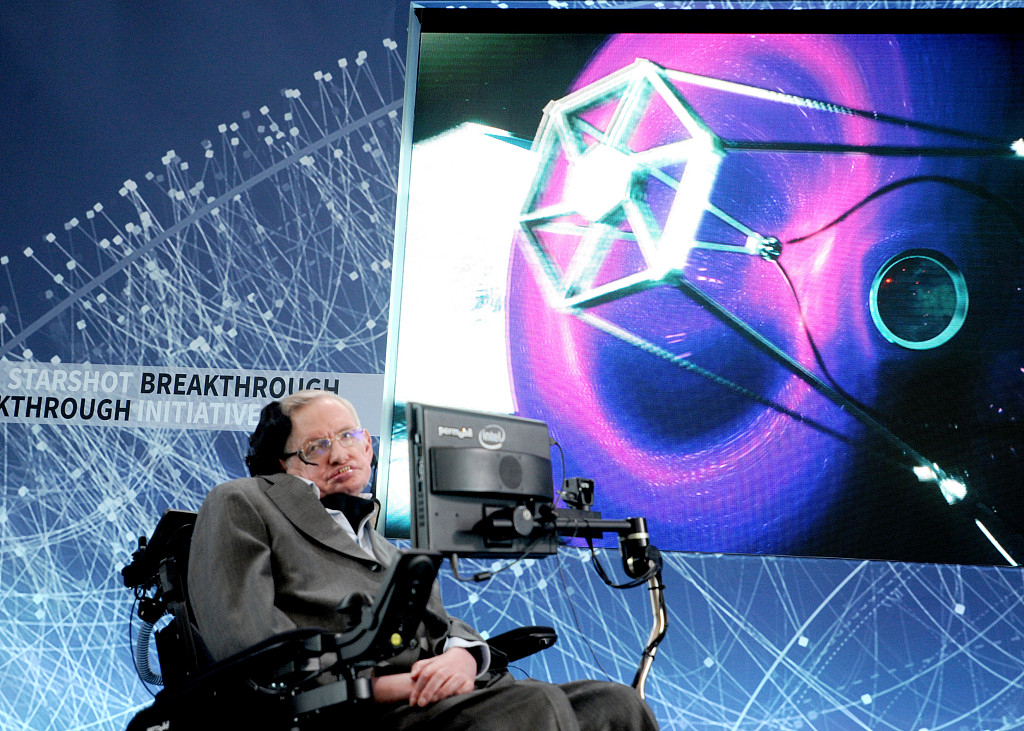
Professor Stephen Hawking attends the New Space Exploration Initiative "Breakthrough Starshot" announcement at One World Observatory in New York City, on April 12, 2016. /VCG Photo
Today, the application has moved beyond the wheelchair. Besides the interface technology focusing on one-way command, the "I" in BCI suggests much broader applications, such as interaction and intelligence, Gao Xiaorong, professor and head of the BCI lab at Tsinghua University, told CGTN.
The second stage of BCI technology is interaction. While the brain sends commands to the machine, the machine can also stimulate the neural network in the cerebral cortex, the brain's control center, during the process. This has been widely applied in the rehabilitation field.
People who have suffered stroke-induced paralysis can recover through robot-assisted treatment. Scientists can record brain signals when patients try to move their paralyzed limbs. Using data from an electroencephalogram (EEG), which measures brain activity, robots can learn how to rehabilitate patients by responding to their commands.
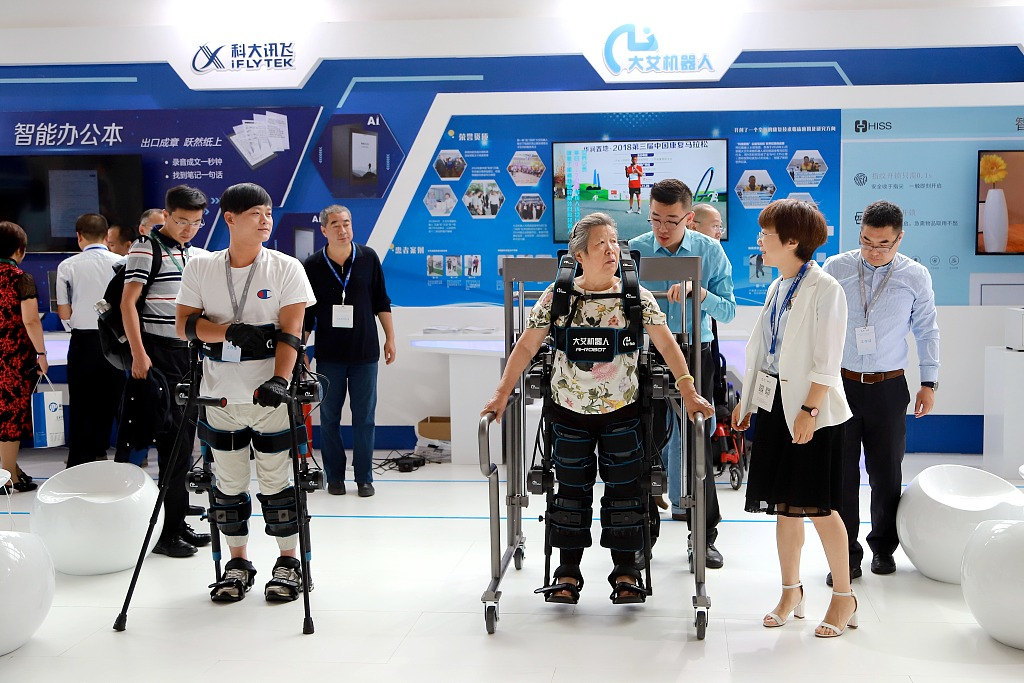
Rehabilitation robots /VCG Photo
This approach can also be used to train healthy people. For example, the road to excellence for a newcomer to competitive rifle shooting cannot be realized without endless practice. But effective training methods matter more. By analyzing the brain activities of excellent athletes and giving them to novices, they can quickly catch up with the professionals.
Studies have gradually extended from interface to interaction, and finally, intelligence, a state where human beings may have super-cognitive capabilities powered by AI, said Gao.
Rather than replacing humans, most AI will collaborate with humans to achieve optimal performance.
As one of the major battlegrounds of future technologies, many countries are vying for the big market. The U.S. government has already added BCI to its export regulation list in an effort to protect the nation's high technologies. The regulated interfaces are shown below:
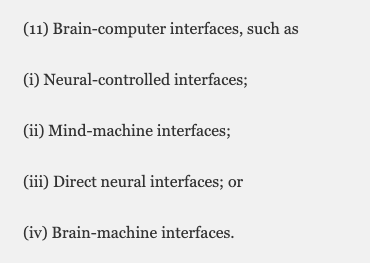
Screenshot from the U.S. Bureau of Industry and Security website
Challenges ahead
There are two major research fields. One is non-invasive BCI technology. Similar to the one applied in EEGs, which is common in hospital tests, the non-invasive method poses no risks to our body. By placing a metal disc with electrodes on the scalp, our brain wave patterns can be clearly shown on the computer.
The invasive way requires a craniotomy, which involves removing part of the skull to expose the brain for a surgical procedure. Because you have to put the tiny equipment with electrodes inside your brain, the advantage is that scientists can get a precise signal collection. This is also what Musk's Neuralink has been working on.
Another professor in the lab, Gao Shangkai, told CGTN that most research is still at the lab level, and has a long way to go before producing commercial applications.
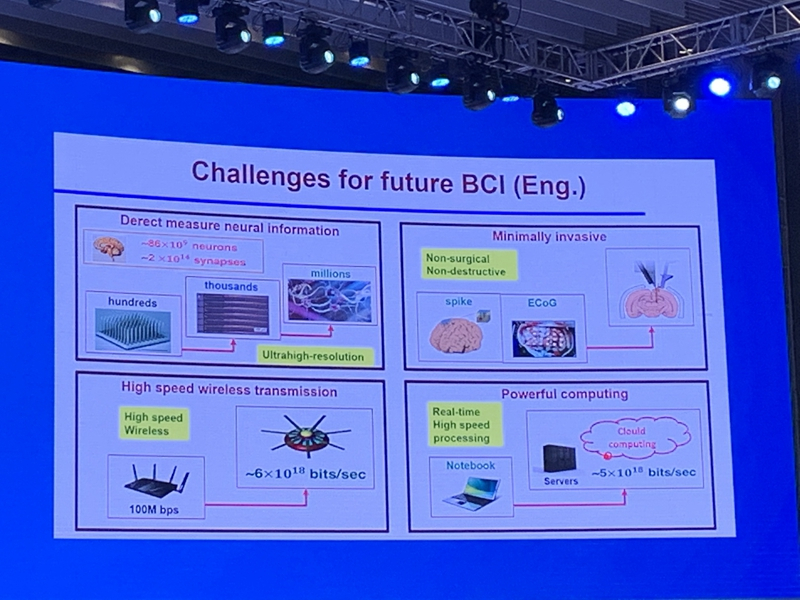
Snapshot of Gao Shangkai's slide at the conference. /CGTN Photo
She also mentioned the future challenges from the perspective of the technology itself during her speech at the WRC, specifying several areas that need more attention, including signal collection, data computing, as well as minimally invasive operation methods.
On future ethical problems, Gao Xiaorong believes humans will take the initiative and have the wisdom to control AI. "But the BCI technology should start with cognitive capability, then to restrain and control functions."

Copyright © 2018 CGTN. Beijing ICP prepared NO.16065310-3
Copyright © 2018 CGTN. Beijing ICP prepared NO.16065310-3